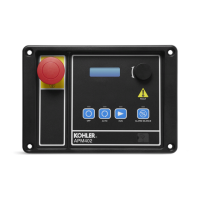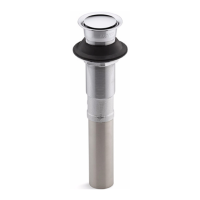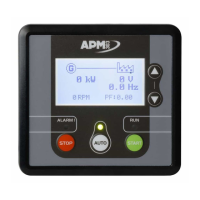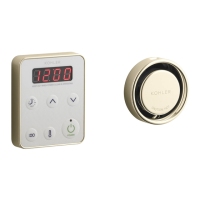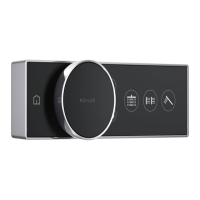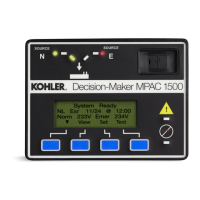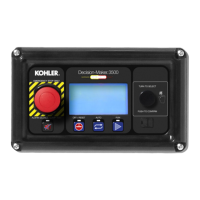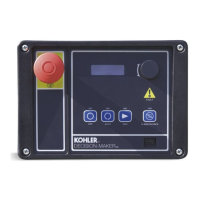4 — PROGRAMMABLE PARAMETERS
pg. 79
Return to TOC Curtis AC F2-A, F4-A, F6-A Motor Controllers – FOS 4.5 – April 2022
APPLICATION SETUP — MAIN CONTACTOR MENU
PARAMETER ALLOWABLE RANGE DEFAULT DESCRIPTION
Main Enable
Main_Enable
0x34C5 0x00
On/Off
On/Off
On When programmed On, the controller's native software
controls the main contactor when enabling the interlock. When
programmed Off, VCL controls the main contactor.
See the assignment parameter in Programmer/Controller Setup/
IO Assignments/Coil Drivers/Main Contactor Driver. The default is
Driver 3.
Note: With Main Enable programmed Off the controller will
not be able to open the main contactor in serious fault
conditions and the system will therefore not meet EEC
safety requirements.
Main State
Main_State
0x34C9 0x00
0 – 10
0 – 10
Read Only Main contactor state:
0 = open
1 = precharge
2 = weld check
3 = closing delay
4 = missing check
5 = closed (when Main Enable = On)
6 = delay
7 = arc check
8 = open delay
9 = fault
10 = closed (when Main Enable = Off)
Keyswitch Voltage
Keyswitch_Voltage
0x3398 0x00
0.00 – 105.00V
0 – 10500
Read Only Voltage at KSI (pin 1).
The value is in 0.01V steps.
Capacitor Voltage
Capacitor_Volts
CAN = 0x34C1 0x00
0.00 – 200.00V
0 – 20000
Read Only Voltage of the controller’s internal capacitor bank at the B+ terminal.
The value is in 0.01V steps.
Note that the precharge, main weld check and DNC tests affect this
reading when those actions are active.
Pull In Voltage
Main_Pull_In_Voltage
0x34C8 0x00
0 – 100 %
0 – 32767
0 % The main contactor pull-in-voltage parameter allows a high initial
voltage when the main contactor driver rst turns on to ensure
contactor closure. After 1 second, this peak voltage drops to the
contactor holding voltage. Typical is 100% to ensure closure.
Note: The Battery Voltage Compensated parameter (0x34C4)
controls whether the pull-in and holding voltages are battery
voltage compensated.
Holding Voltage
Main_Holding_Voltage
0x34C6 0x00
0 – 100 %
0 – 32767
0 % The main contactor holding-voltage parameter allows a reduced
average voltage to be applied to the contactor coil once it has
closed. Typical is 75-80% to conserve energy and coil heating.
Set this parameter (applied voltage) high enough to hold the
contactor closed during all vehicle shock and vibration conditions.
If the voltage is too low, the contactor tips may open when
subjected to shock and vibration conditions.
Note: The Battery Voltage Compensated parameter (0x34C4)
controls whether the pull-in and holding voltages are battery
voltage compensated.
Battery Voltage Compensated
Main_Driver_Battery_Voltage_
Compensated
0x34C4 0x00
On/Off
On/Off
On This parameter determines whether the main pull-in and holding
voltages are battery voltage compensated. When set On, the pull-
in and holding voltages are set relative to the set Nominal Voltage.
In other words the output voltage is adjusted to compensate for
swings in battery voltage so the percentage is relative to the set
Nominal Voltage not to the actual voltage.
For example suppose Nominal Voltage is set to 48V and Holding
Voltage is set to 75 % (36V) to the output driver. Now suppose the
bus voltage dips to 40V. If Battery Voltage Compensated = On, the
output will still be 36V (Nominal Voltage × Holding Voltage) to the
coil. If the Battery Voltage Compensated = Off, the output will be
30V (Actual Voltage × Holding Voltage) to the coil.
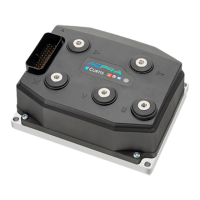
